The basic horoscope is a combination of two charts, the Rasi and the Navamsa. Though the Rasi by far is the more important of the two, the Navamsa enjoys a status that the remaining Shodasavargas or sub-divisional charts do not attract. The Rasi chart has all the Shodasavargas inbuilt into it, yet the Navamsa has always been given prominence by placing it beside the Rasi chart unlike the other sub-divisional charts. The logic of this tradition is difficult to gauge.
According to Parasara in the chapter Vargavivechanadhyaya (Brihat Parasara Hora. Chap VIII-3), नवांशे कलत्राणां ) Chelan’ or the Navamsa is to be looked into for all matters related to the spouse. The 7th house is given prominence over all marital details in the Rasi chart. This house which is in direct opposition to the Ascendant is deemed to be complementary to the Ascendant (the most important point in the chart) and planets in the 7th or otherwise influencing the 7th are deemed to either add to or detract from the strength of the Ascendant and thereby of the entire chart itself. Since the 7th house gains so much importance in the making or marring of the basic chart, the Navamsa whose main signification or content equates with that of the 7th house finds a complementary place beside the Rasi chart.
The Navamsa chart can sometimes, in cases when marriage is elusive in the sense the Rasi chart does not help give a clear picture, be effectively used to time marriage. Once the Dasa has been determined on the basis of the Rasi chart, the Navamsa chart can be examined for identifying the Bhukti that is most likely to give marriage. It has been found in many cases that marriage is likely in:-
(a)The Bhukti whose lord is in Shashtashtaka with the Dasa lord in Navamsa
The Shashtashtaka position is found to show a dislodgement or displacement under general principles of predictive astrology ad such displacement can be of place or of status. Therefore in the present context if the Dasa and Bhukti lord are in Shashtashtaka in Rasi or Navamsa, it can bring about a change in status from being single to married.
(b)The Bhukti of the Navamsa Ascendant lord
Since the Navamsa is primarily concerned with marital matters, the rising Navamsa assumes importance in judgement of such details. The period of the lord of the rising Navamsa should therefore assume a prominent role in this context.
(c)The Bhukti of the lord of the setting or 7th Navamsa
Since the 7th- house rules marriage, planets associated with the 7th house in Navamsa may be deemed to have a say in marital matters. The 7th lord in the Navamsa or the ruler of the setting Navamsa becomes qualified to confer marriage.
(d)The Bhukti of the Atmakaraka
The Atmakaraka as defined by Jaimini as the planet with the maximum longitude in the sign of occupation is a factor that cannot be overlooked in interpretation. The sign of occupation by the Atmakaraka gets special status in Navamsa as Karakamsa and therefore, the period of such a planet may also be deemed to be significant for purposes of timing marriage.
(e) The Bhukti of a planet in Karakamsa
Karakamsa is an important factor in several ways. Sometimes, it is treated on par with the Ascendant and therefore, many of the rules of predictive astrology that apply to a chart with reference to the Rasi Ascendant as a focal point can also be applied equally effectively with reference to Karakamsa.
Chart 1: Male: Born August 20, 1944 at 7h. 11m. (1ST) at 18 N 59, 72 E 60 with a balance of 12 years 1 month 15 days of Venus Dasa at birth.
The 7th house in Chart 1 is aspected by the Ascendant lord Sun, Vargottama benefic Jupiter, 12th lord Moon and Kalatrakaraka Venus which does not seem to show a late marriage. Additionally, 7th lord Saturn is in the 11th house and this is no delaying factor. Let us examine this chart applying the rules generally followed in predicting marriage and then move on to an examination of the Navamsa chart.
Rule 1: The Dasa of the planet in the 7th or aspecting the 7th or owning the 7th house becomes a strong contender in conferring marriage. The 7th house being vacant, the Sun, Jupiter, Moon and Venus as aspecting the 7th house and Saturn as 7th lord become qualified to be the Dasa lord for marriage. Venus Dasa ended at 12 years, Sun Dasa ended at 18 years, Moon Dasa at 28 years, Jupiter Dasa was to start in 1997, Saturn Dasa was to start in 2013 and Mercury Dasa in 2032. Venus Dasa gets over in childhood. Saturn and Mercury are too late to show marriage. And we must remember the chart is not one that can be classified as coming under delayed marriage. Moon Dasa between 18 to 28 years appears to be the most appropriate.
Rule II A: Find out the stronger of the:-
(a)Lord of Rasi occupied by the 7th lord or the sign-dispositor of the 7th lord.
The 7th lord Saturn being in Gemini, such planet is Mercury in Chart 1.
(b)Lord of Navamsa occupied by 7th lord or the Navamsa sign-dispositor of 7th lord.
The 7lh lord Saturn being in Aquarius Navamsa, it is Saturn again.
The stronger of the two becomes eligible for timing marriage. Between Saturn and Mercury, Saturn who is already qualified as 7th lord becomes better bet. Also to be noted is the relative deficiency in strength of Mercury being in a junctional or cuspal degree.
Rule II B: The period of (a) Venus or (b) Moon
Therefore, Mercury, Saturn [Rule 11(a) and (b)] and Venus and Moon [Rule IIB, (a) and (b)] can be Dasa lords conferring marriage. Of these, Mercury and Saturn and Venus get eliminated by reason of their occurrence at too old an age or too young an age. The Moon is thef only qualified planet left to confer marriage.
Rule III: The sign-dispositor of the 2nd lord, of the planet joining the 7th lord as also the 9th and 10th lords. The 2nd lord Mercury is in own sign and the 7th lord Saturn has no association. The 9th and 10th lords are Mars and Venus respectively. Of these, Mercury and Venus have been eliminated. Only Mars remains as contender. The Dasas now available for giving marriage are of the Moon (18 to 28 years) and of Mars ( 28 to 35 years). Since the chart shows early marriage, the Moon Dasa may be deemed more qualified in this context.
The Bhukti can be of any one of these planets.
Rule 1: Venus, Sun, Moon, Jupiter and Saturn.
Rule II: Mercury. Saturn, Venus, Moon.
Rule III: Mercury, Venus and Mars.
That is. the Bhuktis of Moon, Mars, Jupiter. Saturn. Mercury, Venus and the Sun are contenders now in Moon Dasa.
Marriage took place in March 1968 in Saturn Bhukti of Moon Dasa. The Moon favorably placed aspects the 7th house. Saturn is the 7th lord. In Navamsa we find the Dasa lord Moon and and Bhukti lord Saturn are in Shashtashtaka or 6-8 positions which brought in a change in status from bachelorhood to married man. Additionally, we may note the Bhukti lord Saturn is the Navamsa 7th lord placed in the 7th in Aquarius further supporting the Bhukti in conferring marriage. Taking Jupiter’s transit as important, his movement through Leo assumes significance since the sign holds the Ascendant, Janma Rasi, Dasa lord Moon and Kalatrakaraka Venus as well as natal Jupiter in Rasi.
Reverting to the Navamsa, the Dasa lord Moon in Virgo has Saturn and Ketu in Shashtashtaka positions from him. Between the two, Saturn as Rasi 7th lord becomes more qualified to show marriage. The Bhukti lord Saturn as the Navamsa 7th lord as well scores over Ketu. Now transpose the transits on to the Navamsa chart. Transit wise, the Nodal axis is across the Navamsa Moon who also happens to be Dasa lord. Saturn in transit is in Pisces aspecting Dasa lord Moon in Navamsa, while transit Jupiter is on Navamsa Ascendant influencing the Navamsa 7th house and lord as well as Bhukti lord Saturn. Almost all the conditions apply very well to this case.
Chart 2: Female: Born June 22, 1954 at 9h. 20m. at 28 N 40, 77 E 13 with a balance of 4 years 11 months 5 days of Rahu Dasa at birth.
In Chart 2, marriage took place on January 28, 1980 in Mercury Bhukti of Saturn Dasa. The Dasa and Bhukti lord are in Shashtashtaka or 6-8 positions in the Navamsa. The Bhukti lord Mercury is also the 7th lord in Navamsa. He is the Atmakaraka as well.
Transit Saturn was in Virgo in the Navamsa 7th house which also happens to be the 7th sign from the Navamsa Moon. Transit Jupiter in Leo aspected Navamsa Ascendant lord Jupiter apart from being in the 7th from natal Moon. The transit Nodal axis in Aquarius-Leo cut across the Navamsa Ascendant lord Jupiter.
It is important to always bear in mind that astrology is not merely predicting. It is more a counseling tool that can effectively employed to handle tense and unpalatable situations, especially within the family. The increasing opportunities for interaction and meeting between young people with the rigid taboos of the greater part of the last century against intermingling of members of the opposite sex loosening has led to young people being drawn into emotional involvements. In a country as diverse as ours, such involvement brings the questions of caste, creed and community igniting, many a time, tensions between parents and the youngsters. In such circumstances, an astrological approach in the situation can not only help diffuse the conflict but also help in making the decision. Confirmatory clues can indicate the parents can do little to wean away their children from the involvement. And that acceptance would be the best solution.
Courtesy: Modern Astrology to be continued
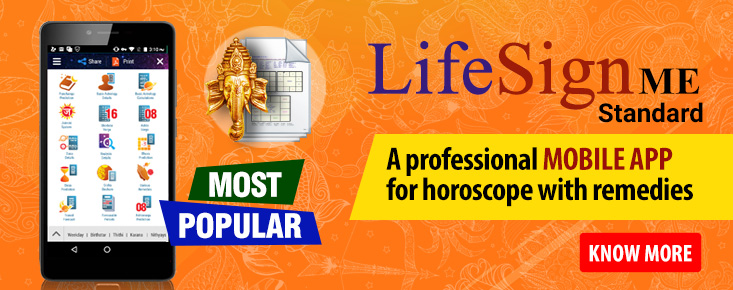


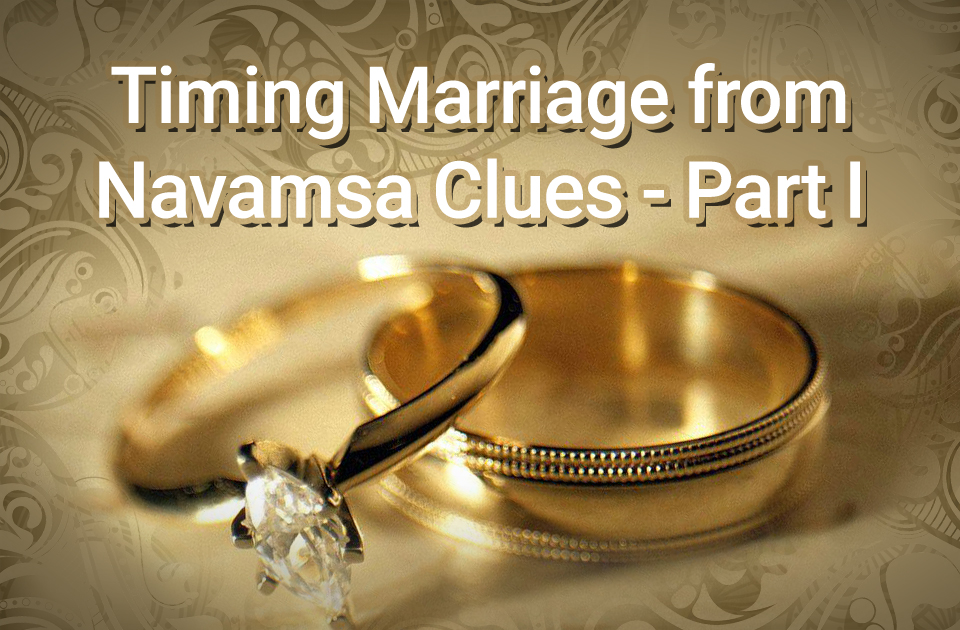


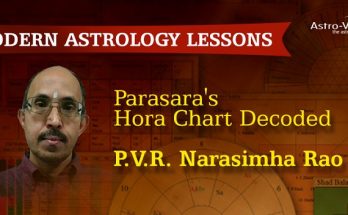
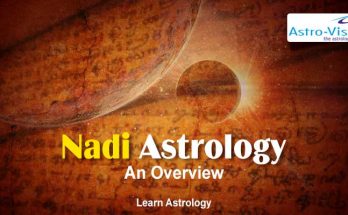
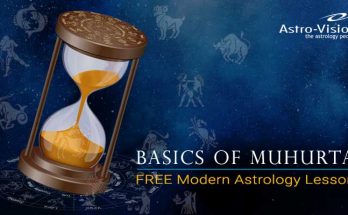

Sir. As navamsha is a macroscopic view of marriage event, the placement and dignity of seventh lord and Venus in navamsha shall alone give clue to all details .seventh house and it’s lord afflictions in navamsha are a stronger cause of delay and unhappiness in marriage. If there is Navamsha for navamsha it may throw better light on it provided such things are supported by classical works.